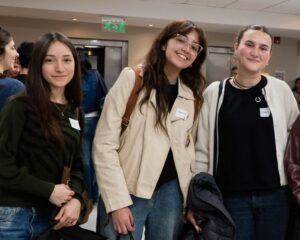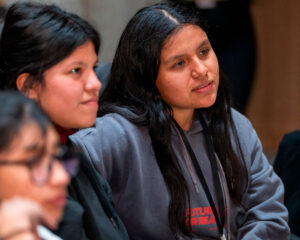When we think about the future of technology, we cannot stop talking about who is building it. And here is a fact that continues to make a difference: women continue to be a minority in STEM (science, technology, engineering and mathematics) university careers in Latin America.
In our latest research, The Remaining GapIn this report, we surveyed and analyzed data from the university systems of Argentina, Mexico, Peru, Colombia, Chile and Uruguay. The report, in addition to providing a comparative analysis of the situation, included a country-specific section examining the particularities of each university system and national statistics.
We developed our own census methodology, which incorporated specific categories focused on programming-intensive and technological development careers (electronic engineering, robotics, biotechnology and hardware design and development, among others). This approach allowed us to more clearly identify gender inequalities in the university system and to compare statistics between countries in the region.
But behind the numbers and statistics there are stories. Voices of young people who, from different countries, cross barriers when it comes to reaching university and make visible a gap that persists. From Chicas en Tecnología we launched the "Historias que cuentan" campaign to connect these first-person experiences with their research data, which allowed a different and impactful approach.
How many women study programming in Argentina?
In Argentina, only 2 out of 10 programming students are women. And this is a pattern that is repeated throughout Latin America. Marianela, a 20-year-old Argentinean student, was able to verify it: "In my first class we were 60 boys and 5 girls.. That was a number that marked me quite a bit."
At first it was a shock for her, but she found motivation in her family and references in Chicas en Tecnología, where she met other students from different countries who were in the same situation: "There I said: wow, I'm not alone, there are more people".
What percentage of women study technology careers in Colombia?
In Colombia, careers in technological development represent only 2.4% of female enrollment. And that's how Vanessa, a student of Computer Engineering, experienced it: "I remember the first day of classes. there were about 100 of us and only 8 of us were women.. It was shocking, I wondered: Why are there so few of us?".
When she was a little girl, she used to take her toys apart to understand how they were made. That game turned into a vocation and led her to study computer engineering: "I took it as a personal challenge to encourage more girls to join the STEM fields. It's hard, yes, but it's totally worth it".
How many girls study ICT careers in Mexico?
In Mexico, only 2% of female students choose ICT (Information and Communication Technologies) as a field of study. Beatriz, a Telematics Engineering student, confirmed: "I knew there were few women, but it was still shocking and sad.
Her connection to technology began at a very young age, customizing her computer and taking it apart. Despite growing up hearing that math was "not for girls," she decided to pursue a STEM career.
How many women study science, technology, engineering and mathematics careers in Peru?
In Peru, fewer than 3 out of 10 students in STEM careers are women. And Lucía's story reflects what the numbers show: "When I arrived at the university, on the first day of induction I was surprised: we were 7 girls in a class of 68 students. However, over time I formed a group of friends that was a great support for me."
At the age of 7, her grandfather gave her a computer. That gift was the beginning of a path that led her to study Civil Engineering, with an interest in leading projects in the mining sector.
Marianela, Vanesa, Beatriz and Lucía are not alone. Their voices highlight a gap that is not individual, but structural, and that crosses all of Latin America. Reducing this gap is not just a matter of numbers: it is a matter of opening possibilities, multiplying perspectives and building a more diverse and inclusive technology. Learn more in our regional research: "The gap that persists.".
This campaign was supported by the S&P Global Foundation.









